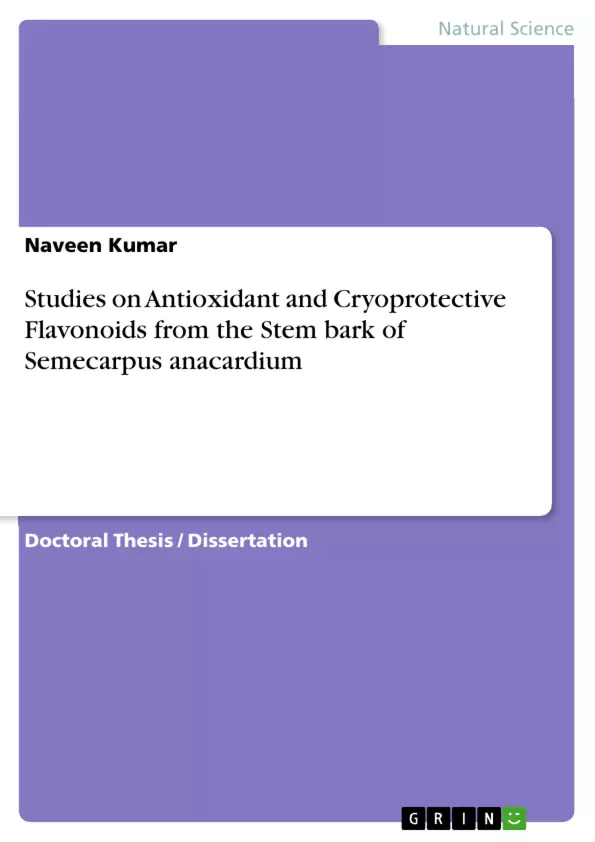Oxidative stress, excess generation of Reactive Oxygen Species (ROS), is a common event in many pathological conditions including cancer. The generation of reactive oxygen species (ROS) is an inevitable aspect of life under aerobic conditions. ROS are continuously produced as byproducts of certain metabolic pathways and also by some specific systems under fine cellular control. At the same time, ROS are degraded via several specific and nonspecific mechanisms. These two processes are usually under tight cellular control and very low (<10-8 M) steady-state levels are maintained. However, under some special conditions, the balance between ROS production and elimination is disturbed and leading to generation of super oxides (O2-), hydroxyl radical (OH-) and hydrogen peroxide (H2O2).
H2O2, a common intermediate of various enzymatic and non-enzymatic reactions including electron transport chain, peroxisomal oxidases, flavoproteins as well as D-amino acid oxidases, L-hydroxy acid oxidases and fatty acyl oxidases. In endoplasmic reticulum, cytochrome P-450, P-450 reductase and cytochrome b-5 reductase generate superoxide anion and hydrogen peroxide during their catalytic cycles. The catalytic cycle of xanthine oxidase has emerged as an important source of O2 – and H2O2. During phagocytosis, the phagocytic cells such as neutrophils generate O2– and H2O2 by NADPH oxidase. Inflammation is also one of the major sources of ROS. Spontaneous dismutation of O2– at neutral pH or dismutation by superoxide dismutase also results in H2O2 production. Substantial evidence has indicated that H2O2 play a key role in wide range of diseases including CNS , autoimmune, cardiac, alveolar and hepatic disorders. The pathological role of H2O2 is well established in many acute and chronic disorders such as ischemia, atherosclerosis, diabetes, aging, immuno suppression and neuro degeneration.
H2O2 is an important metabolite produced in cells during metabolic reactions, plays an important role in cell death (or) apoptosis. Accumulating data suggest that an increase in the cellular concentrations of H2O2 associated with DNA damage and mutations which leads to the prevalence of various disorders. H2O2 induced DNAf damage seems to be mediated by OH.- generated from H2O2. Several studies have also demonstrated that increased levels of H2O2 can induce cell death.
Table of Contents
- Chapter I: Introduction and Review of Literature
- 1.1 Introduction
- 1.2 Review of Literature
Objectives and Key Themes
This thesis aims to investigate the antioxidant and cytoprotective properties of flavonoids extracted from the bark of Semecarpus anacardium. The research explores the mechanisms by which these flavonoids combat oxidative stress and their potential therapeutic applications.
- Oxidative stress and its role in various diseases
- Antioxidant enzymes (SOD, catalase) and their mechanisms
- Flavonoids as antioxidants and their mechanisms of action
- The role of Nrf2 in cytoprotection
- Medicinal plants and their traditional uses
Chapter Summaries
Chapter I: Introduction and Review of Literature: This chapter provides a comprehensive overview of oxidative stress, its contribution to various pathologies, and the body's natural defense mechanisms. It details the roles of reactive oxygen species (ROS) like hydrogen peroxide and superoxide, emphasizing their involvement in cellular damage and disease progression. The chapter extensively reviews the functions of key antioxidant enzymes, such as superoxide dismutase (SOD) and catalase, and their synergistic actions in mitigating ROS-induced harm. Furthermore, it highlights the importance of flavonoids, a class of natural antioxidants, in scavenging free radicals and protecting against oxidative stress. The discussion extends to the role of the Nrf2 transcription factor in regulating the expression of cytoprotective genes, underscoring its significance in maintaining cellular homeostasis. Finally, the chapter touches upon the historical and ongoing use of medicinal plants, particularly in traditional medicine systems, as sources of valuable therapeutic compounds.
Keywords
Oxidative stress, Reactive Oxygen Species (ROS), Antioxidant enzymes, Superoxide dismutase (SOD), Catalase, Flavonoids, Semecarpus anacardium, Nrf2, Cytoprotection, Medicinal plants.
Frequently Asked Questions: Comprehensive Language Preview
What is the main topic of this thesis?
This thesis investigates the antioxidant and cytoprotective properties of flavonoids extracted from the bark of Semecarpus anacardium and explores their mechanisms in combating oxidative stress and potential therapeutic applications.
What are the key themes explored in the thesis?
Key themes include oxidative stress and its role in diseases, antioxidant enzymes (SOD, catalase) and their mechanisms, flavonoids as antioxidants and their mechanisms of action, the role of Nrf2 in cytoprotection, and medicinal plants and their traditional uses.
What does Chapter I cover?
Chapter I provides a comprehensive overview of oxidative stress, its contribution to various pathologies, and the body's natural defense mechanisms. It details the roles of reactive oxygen species (ROS), antioxidant enzymes (SOD, catalase), flavonoids, and the Nrf2 transcription factor. It also touches upon the historical and ongoing use of medicinal plants in traditional medicine.
What are the objectives of this research?
The research aims to investigate the antioxidant and cytoprotective properties of flavonoids from Semecarpus anacardium bark, exploring their mechanisms in combating oxidative stress and their potential therapeutic applications.
What are the key words associated with this research?
Key words include Oxidative stress, Reactive Oxygen Species (ROS), Antioxidant enzymes, Superoxide dismutase (SOD), Catalase, Flavonoids, Semecarpus anacardium, Nrf2, Cytoprotection, and Medicinal plants.
What is included in this language preview?
This comprehensive language preview includes the title, table of contents, objectives and key themes, chapter summaries, and key words.
What is the structure of the Table of Contents?
The provided preview only shows the first chapter, "Chapter I: Introduction and Review of Literature," which is further divided into sections 1.1 Introduction and 1.2 Review of Literature.
- Quote paper
- Dr. A.D. Naveen Kumar (Author), 2014, Studies on Antioxidant and Cryoprotective Flavonoids from the Stem bark of Semecarpus anacardium, Munich, GRIN Verlag, https://www.grin.com/document/380764



